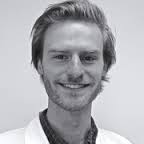Engineering of lung tissue offers a method of creating 3-D lung tissue for studying human disease

One of the challenges in regenerative medicine is the 3-dimensional construction of the complex human tissue that is being attempted to replace. Two-dimensional cultures of functioning cells are a relatively simple laboratory technique for studying cells and disease, yet they are only a simple representation of the true function of an organ.
To replicate real organ function inside the human body, a much larger volume of tissue is needed, and generally involves complicated internal architecture including a vascularization to provide the cells with oxygen and nutrients. In the case of the lungs, cells are arranged around small air pockets, called alveoli. The alveoli are the space in the lungs that fill with air and gas is exchanged.
In a recent study published in Stem Cells Translational Medicine researchers have created 3-dimensional lung tissue by growing stem cells on small microbeads1. The microbeads take the place of the air pockets in the alveoli, around which lung cells are organized. The lead author of the study is Dr. Brigitte Gomperts, an associate professor of pediatric hematology/oncology at UCLA, was quoted saying “While we haven’t built a fully functional lung, we’ve been able to take lung cells and place them in the correct geometrical spacing and pattern to mimic a human lung.”
Alginate microbeads, only ~160 microns in diameter, were seeded with induced pluripotent stem cells to create 3-D lung organoids. The stem cells were created from tissue samples of healthy human lungs and the authors claim that these samples could be taken from the prospective patient so as to have a personalized model of their disease.
The motivation for this study was rooted in the UCLA group’s research into idiopathic pulmonary fibrosis (IPF), which is a chronic scarring of the lungs that eventually results in lung failure. The group found that it was difficult to study this disease in the lab because the disease could not be modeled in a normal 2-D cell culture. Using this technique the researchers hope to be able to study this disease further and hope to provide a platform for a personalized medicine approach to investigating and treating lung disease. It can be anticipated that this and similar approached could be used to create functional lung tissue to be used in regenerative medicine.
Resources:
- Dan C. Wilkinson et al. Development of a Three-Dimensional Bioengineering Technology to Generate Lung Tissue for Personalized Disease Modeling. Stem Cells Translational Medicine, 2016 DOI: 10.5966/sctm.2016-0192


